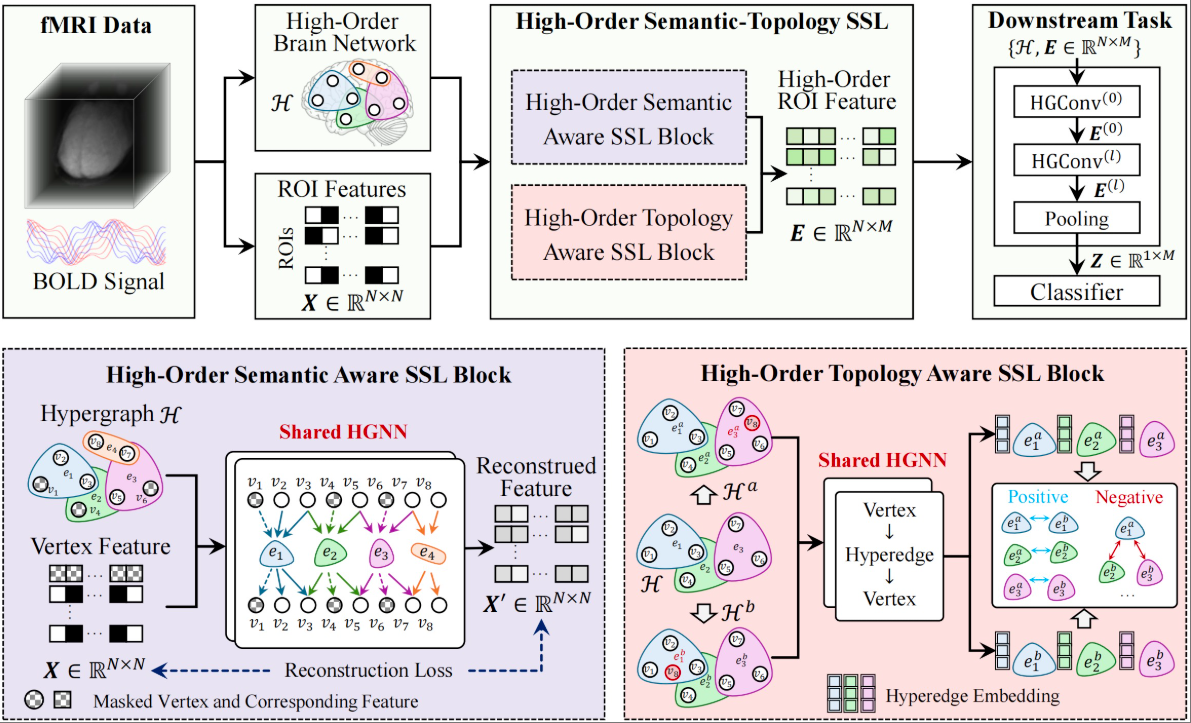One paper been accepted by PR 🎉
Title: Multimodal Hypergraph Guide Learning for Non-Invasive ccRCC Survival Prediction
Brain networks involve complex multi-view interactions, and accurately modeling this information is essential for improving brain disease diagnosis. Traditional graph-based methods often fail to capture the high-order topological and semantic features inherent in functional brain networks, which limits their diagnostic effectiveness. To address this limitation, we propose a HyperGraph-based Semantic and Topological self-supervised learning (HGST) method for brain disease diagnosis. HGST utilizes hypergraph structures to model high-order functional connections among brain regions, thereby capturing complex multi-region interactions. Through hypergraph self-supervised learning, HGST extracts latent topological and semantic features to generate high-order embeddings for downstream brain disease diagnosis. Specifically, HGST comprises two core components: a semantic-aware module based on hypergraph link prediction and a topology-aware module based on hyperedge structure similarity. The former learns high-order embeddings by restoring masked node features, while the latter captures local topological associations by measuring similarities among hyperedges involving multiple brain regions. Finally, we employ a pretrained shared hypergraph neural network as an encoder to extract high-order brain network embeddings for each subject, facilitating brain disease diagnosis. We validated HGST on two public brain disease datasets, ADHD and MDD, where it outperformed existing methods in diagnostic performance. Additionally, we visualized the high-order brain networks produced by hypergraph self-supervised learning and identified key disease-related regions, further supporting the effectiveness and interpretability of our method. The source code is available in \href{https://github.com/iMoonLab/HGST}{https://github.com/iMoonLab/HGST}
